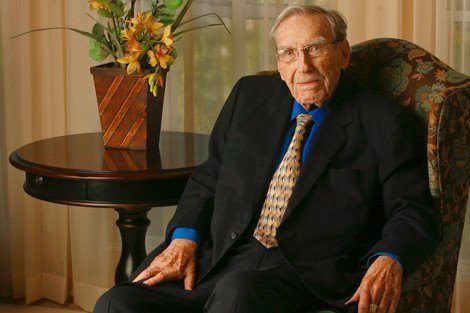James H. Steele, MPH ’42, was on the verge of leaving Harvard School of Public Health (HSPH) when then-Dean Cecil Drinker came to the rescue with much-needed financial support.
That single small investment paid extraordinary dividends. In the half century that followed, Steele went on to lay the groundwork for much of our understanding of how diseases jump from animals to people, and he spearheaded pioneering work leading to development of a safe, effective rabies vaccine.
The lone veterinarian in a class of physicians at HSPH, Steele subsequently founded the first veterinary public health program at the U.S. Public Health Service, where he served for 26 years. In 1971, after retiring from the Public Health Service, he joined the faculty of the University of Texas School of Public Health, where he is currently professor emeritus. He is often referred to as “the father of veterinary public health.”
Along with his professional accomplishments, Steele also went on to become a financial aid donor himself. Virtually every year for the past 40 years, Steele has given to scholarships at HSPH in Dean Drinker’s honor, supporting today’s students as he himself was supported. (For more about the impact of financial aid at HSPH, watch this short video.)
Earlier this year, Steele—HSPH’s oldest living alumnus—celebrated his 100th birthday, just as HSPH prepares to celebrate its own Centennial. His sense of humor remains sharp. “I look forward to my 107th birthday when I can finally say, ‘Hindsight being 2020, yep—we got it right,’” he said in a recent interview.
Is there an event, person, or discovery in Harvard School of Public Health history that you’d like to read about? Send your suggestions to centennial@hsph.harvard.edu.
